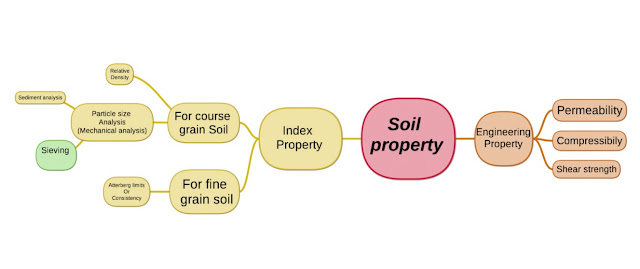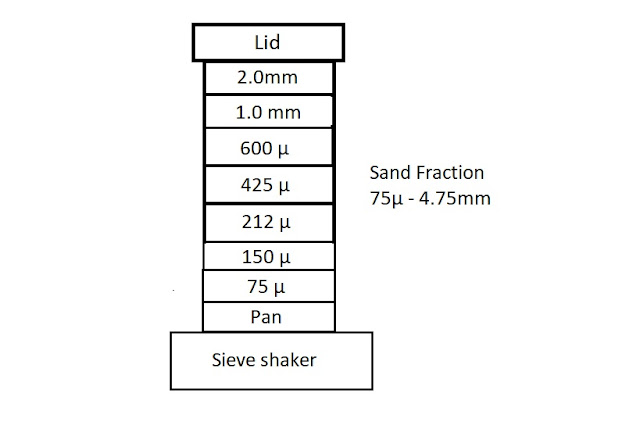What is Sieving
Sieving is Process of Separation of soil, on the bases of particle size. Its come under the Mechanical analysis which is index property of coarse grain soil. The process is done manually or by machine, we suggest see Table below for better understanding the term sieving.
 |
| Soil property |
Process of sieving
From the above chart, we know sieving is done for Coarse-grained soil. in the process, the soil is sieved throw set of sieved, stacked one over the other, from top to bottom in decreasing size. the Receiver at the bottom knows pan, which is without opening. sieve generally made of spun brass and phosphor bronze.
The sieving process for coarse-grained soil further divide into = Dry and wet sieving
Before discussing dry or wet term firstly let’s check sieve type = Gravel Fraction and sand Fraction
Sieve analysis
sieve analysis is the process in which different size sieve is placed on each other So that we can divide the various particles of that Soil according to its size, and prepare a table and graph of soil particle arrangement and which is used to find different properties of soil which are used in a various soil test.
sieve analysis mainly consists of two types of dry sieve analysis and wet sieve analysis, which is following
Sieve analysis of coarse and Fine aggregate
Dry sieve analysis –
This type of sieve analysis soil should be oven dry, not containing lump, also not containing any organic material.
firstly the sample of soil collected from the material which is used in the construction or maybe purpose of practical. the weight of the sample should be checked, then the sample is sieving throw the gravel fraction sieve, then the amount of material retained in 4.75 mm is gravel fraction and passing material throw 4.75mm is used for the sand fraction.
also, the sand fraction is done and all data is collected from both sieves. now time for the analysis the data how much quantity of material retained in each category of sieve by Computation of percentage finer.
now finally Particle size distribution curve Plotted, From the help of this curve we can find the soil is well graded, uniformly graded, fine graded, gap graded, coarse graded.
wet sieve analysis
some time soil contains more than 5% fine particles, which is stick to each other so before the sieving. the sample is washed properly from water then air or oven dry is done. the remaining process is the same as Dry sieve analysis.
We Know sieving is done manually or with the help of a machine. in the sieving machine case, a vibrating base is attached to the sieve set. this vibrating base shack the sieve set and soil sample retain in sieve set according to their size. data is collected according to discuss above, and the final curve is plotted from the test data.
Hope you enjoy the article. never forget to share and giving feedback. thanks for reading


